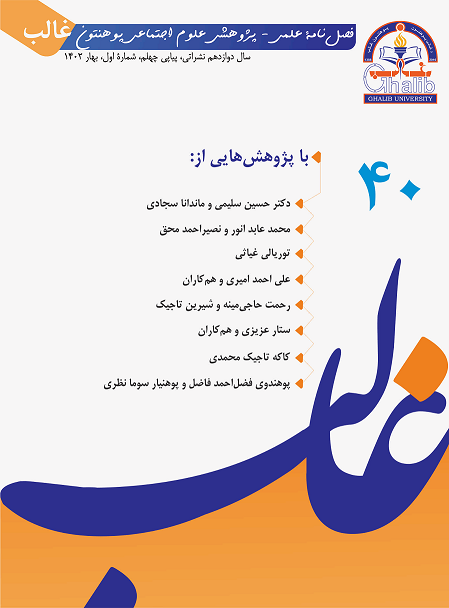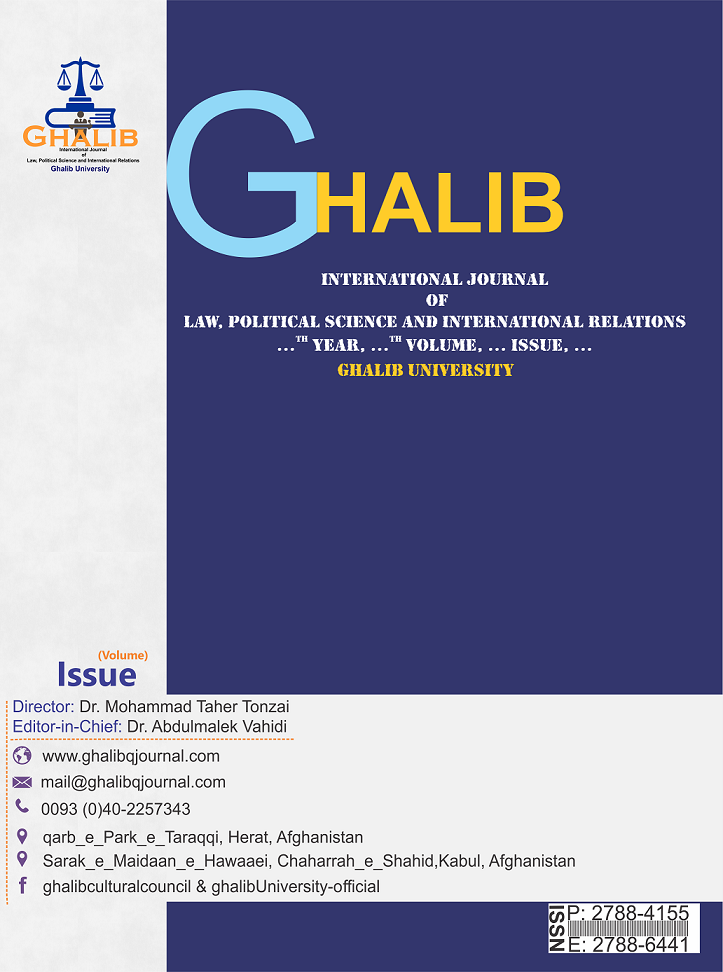Challenges of the Concept of Prisoner of War
(Emphasizing the Study of the US Approach to Unlawful Combatants)
DOI:
https://doi.org/10.58342/ghalibqj.V40.I1.6Keywords:
prisoners of war, illegal combatants, rights of the United States of AmericaAbstract
One of the most important pillars of international humanitarian law has been the separation of combatants from civilians. The obvious characteristic of the warrior is that they have the right to participate in conflicts. Combatants are not prosecuted and punished for taking legal actions in war and should be released after the end of hostilities. Identifying the status of a prisoner of war is a necessary prelude for the combatant to benefit from these rights. The United States refused to recognize the status of prisoners of war for the prisoners of war in order to exclude the fighters affiliated with the Taliban and Al-Qaeda in the war in Afghanistan and named them as illegal combatants in order to keep them in detention for an indefinite period. The purpose of this research was to investigate the international responsibility of the US government in establishing this law and the necessity of abolishing this regulation. The basic question of this research was: To what extent does the new approach of America, especially the 2006 law, comply with humanitarian law regulations? The research method of this research is analytical-descriptive and the method of collecting information is library. By examining the rules of international law, including international jurisprudence, we have reached these findings that: in addition to contradicting the provisions of the Third Geneva Convention, the said law will create a dangerous practice in international relations and is a setback in observing the established rules of humanitarian law in the field of combatants' rights. which has been developing and progressing in the last few decades.
References
الف. فارسی
راجرز، آنتونی؛ مالرب، پل. (1387). قواعد کاربردی حقوق مخاصمات مسلحانه. ترجمۀ کمیتۀ ملی حقوق بشردوستانه. چ سوم. تهران: امیرکبیر.
سیاه رستمی، هاجر؛ حسیننژاد، کتایون و محسن افچنگی. (1390). حقوق بینالملل بشردوستانه ناظر بر حمایت از افراد در درگیریهای مسلحانه (مجموعه اسناد ژنو). تهران: انتشارات مؤسسۀ آموزش علمی- کاربردی هلال ایران.
ضیایی بیگدلی، محمدرضا. (1392). حقوق بینالملل بشردوستانه. تهران: انتشارات گنج دانش.
كنعانی، محمدطاهر؛ سياه رستمی، هاجر و کتایون حسيننژاد. (1383). حقوق بينالملل بشردوستانه ناظر بر حمايت از افراد در درگيری مسلحانه (مجموعه اسناد ژنو). چدوم. تهران: انتشارات كميتۀ ملی حقوق بشردوستانۀ جمهوری اسلامی ايران.
هنکرتز، ژان ماری؛ لوییس دوسوالدبک. (1387). حقوق بینالمللی بشردوستانۀ عرفی. جاول. ترجمۀ دفتر امور بینالملل قوۀ قضائیۀ جمهوری اسلامی ایران و کمیتۀ بینالمللی صلیب سرخ. تهران: انتشارات مجد.
ب. انگلیسی
Aldrich, George. (1982). "Guerilla Combatants and Prisoner of War Status". American University International Law Review. Vol31, pp. 871-878.
Bikova, Veronika. (2015). "Talking about Unlawful Combatants? A Short and Concise Assessment of a Long and Multifaceted Debate". Available at: https://www.academia.edu/25892035/Talking_About_Unlawful_Combatants_A_Short_and_Concise_Assessment_of_a_Long_and_Multifaceted_Debate.
Desalegn, Alemneh. (2019). "Protection of Unlawful Combatants Under the Contemporary IHL". Avaliable at: https://www.academia.edu/38847264/Protection_of_Unlawful_Combatants_Under_the_Contemporary_IHL.
Elsea, Jennifer. (2003). "Treatment of Battlefiled Detainees in the war on Terrorism". (2d ed., 17 Sept. 2003). at http://www.fas.org/irp/crs/RL31367.pdf.
Goldman Robert & Brian D. Tittemore. (2002). "Unprivileged Combatant and the Hostilities in Afghanistan: Their Status and Rights under International Humanitarian and Human Rights Law". ASIL task force on Terrorism.
Hacker E. Donald. (1978)."The Application of Prisoner-Of-War Status to Guerrillas Under the First Protocol Additional to the Geneva Conventions of 1949". Boston College International & Comparative Law Journal. vol2, no.1.pp.131-162.
Nurick, Lester & Roger W. Barret, “egality of Guerrilla forces under the laws of war", American Journal of International law, Vol: 40, Issue 3, pp.563-583.
O'Scannlain F. Diarmuid. (2005). "Dissecting the Guantanamo Trilogy", Notre Dame Journal of Law, Ethics & Public. Policy ,Vol:19,Issue 1, pp.317-325
Quéguiner, Jean-François ( 2003), "Direct Participation in Hostilities under International Humanitarian Law". International Humanitarian Law Research Initiative, Reaffirmation and Development of IHL, Program on humanitarian policy and conflict Research. Available at. Harvard university; Nov 2003; http://www. Ihlresearch.org/portal/ ihli/alabamp. Ph.
Sandoz, Yves & Christophe Swinarski, Bruno Zimmermann (1987), Commentary on the Additional Protocols of 8 June 1977 to the Geneva Conventions of 12 August 1949,Geneva, Martinus Nijhoff Publisher.
Vark, Rene ( 2005), "The Status and Protection of Unlawful Combatants", Jurdica International,Vol: 10, pp.191-198.
Kennet Watkin,( 2003), "Combatants, unprivileged and conflicts in the 21st century", HPCR Policy brief, <http://www.ihlresearch.org/portal/ihli/session2.
Kennet Watkin,( 2005), "Warriors without rights? Combatants, unprivileged Belligerents, and the Struggle over Legitimacy", Program on Humanitarian Policy and Conflict Research, Harvard University, November 2005, available at: www.hsph.harvard.edu/hpcr.
Downloads
Published
How to Cite
Issue
Section
License
Copyright (c) 2023 ghalib quarterly journal

This work is licensed under a Creative Commons Attribution 4.0 International License.













